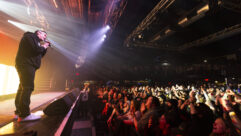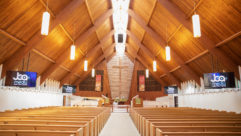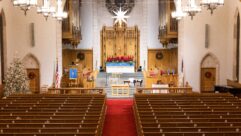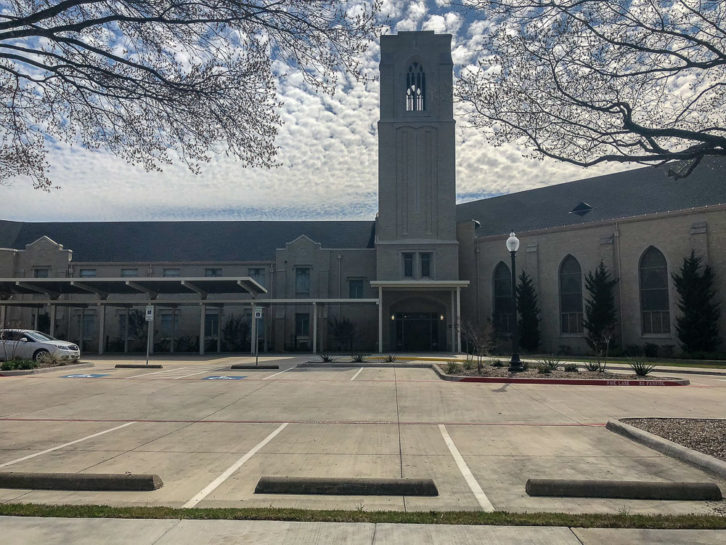
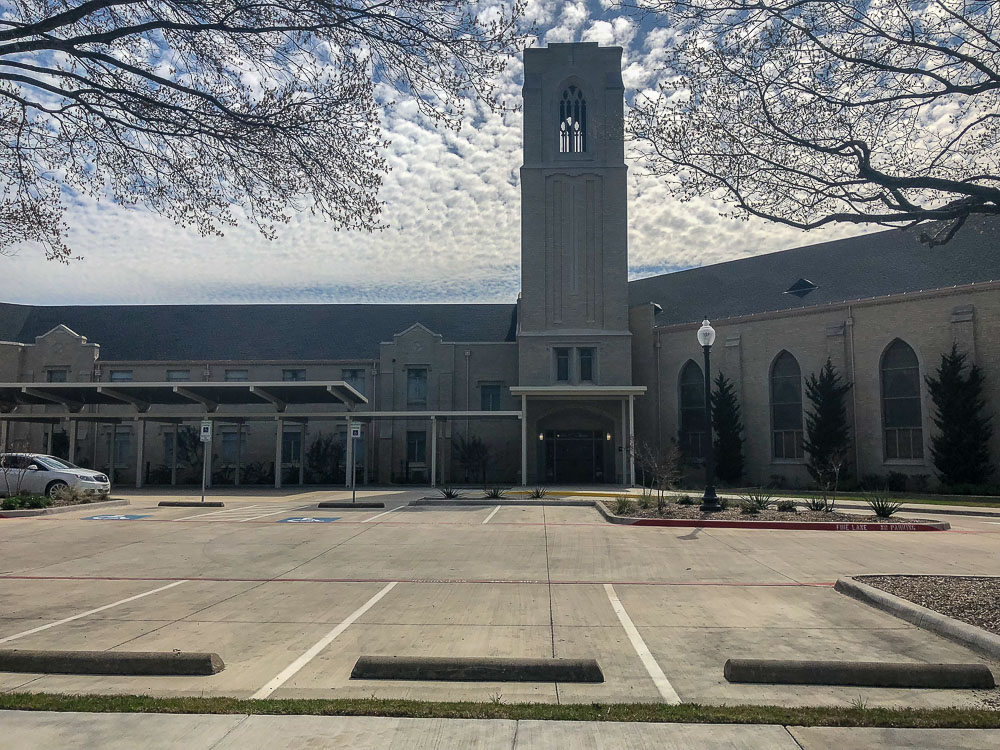
The First United Methodist Church in Waxahachie, Texas had been making do with an outdated sound system and their old building didn’t have the power capacity to handle a new one. Local tech firm Featherston Media was called in. They upgraded the power and the sound for a dynamic new worship experience that still retained the traditional aesthetic that reflects the worship style. Featherston’s Ian Burnell has the details.
SVC: First let’s talk a little about Featherston Media. It looks like AV design and installation is just a part of what you do.
Ian Burnell: Our goal is to be our clients’ unified media solution. So besides audio, video and lighting installation and design we also provide wireless, cabling, security, access control, phone systems. We like to provide all aspects, including AV or networking and IT. For example, take a church. They have an AV company, they have a security company, they have an IT company, they have a phone company. It all just gets kind of scrambled all together, so we like to consolidate and make all that seamless and unify it. We’re just south of Dallas, so we’re in that market of Dallas and Fort Worth. We have all sorts of clients – business clients, health, government agencies.
The First United Methodist Church in Waxahachie sounds like it might be a fairly traditional place. What sort of a style do they have?
They’re very traditional. As soon as you step in there you can see from their stained glass windows just how beautiful the campus is to hold their traditional values. Their worship style is piano, organ, maybe a drum set. The choir definitely was one of the big aspects of their worship. Sometimes they had a saxophone come in.
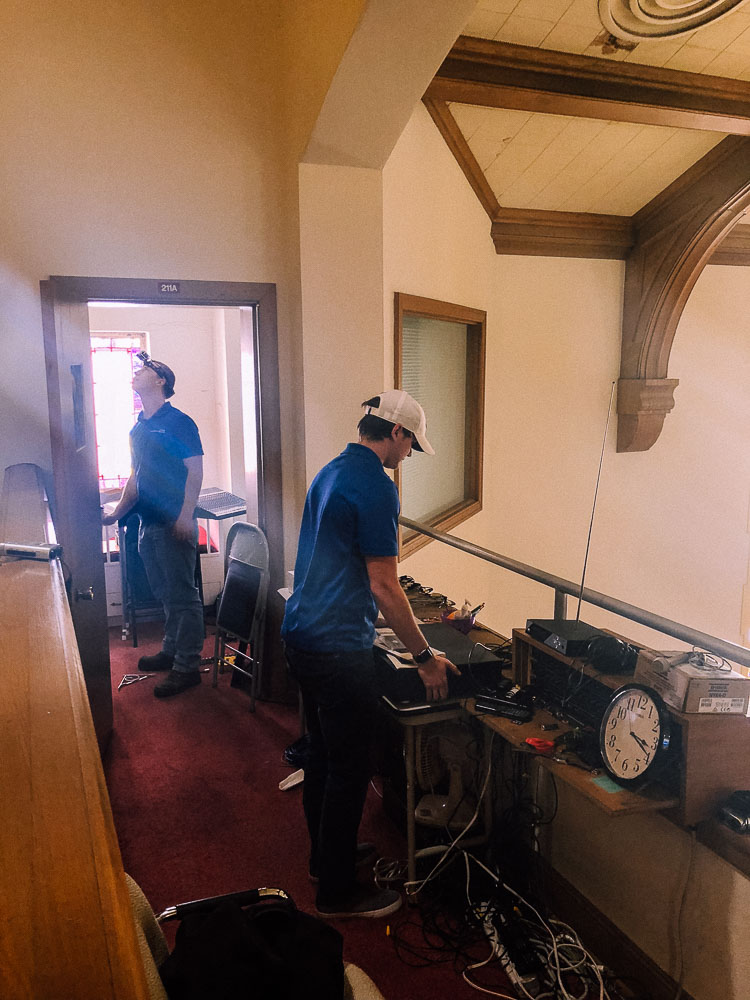
And it’s a pretty old building. I think it was built in the 1950s. When they finally decided they needed a sound system renovation, how well were they keeping up the system they had?
Sound system-wise they were using an old analog board. I think it was a 32-channel analog board. Speaker-wise they had one speaker up in an old PA system box and that speaker wasn’t even the one built for that box. They realized they needed something a little bit better; especially when it came to their sermons and their head pastor speaking. They realized there was quite an issue. They hadn’t kept up with the technology when it came to their audio as their church grew.
I think you attended the WFX Worship Facilities Conference in nearby Dallas. Did you find a solution for them there?
We actually had a booth at the WFX this year in Dallas. We got to meet a lot of vendors there. My design lead and I made sure we went in and listened to some of the speaker manufacturers. One of them was RCF, and that’s what we were looking at for First United Methodist Church, as well as a couple of other churches that needed to fit a specific budget. While we were there we got a demo and we knew right away that this was going to be the system that we would be able to effectively and comfortably bid and put in for First United.
I looked at the RCF speakers and they have some models that are quite a bit bigger and more powerful active speaker units. Why did you decide on the HDL6-A?
There are two main reasons why we chose the HDL6s. First, like I mentioned before, is just their style of worship. If we went with something more powerful it would have been overkill for their style of worship and their style of sermon. Second was the price. We were able to stay within a budget that the church was comfortable with that. Going with the HDL6s allowed us to implement other things like the new TF3 console with the Dante integration card as well as the Atlas DSP and the choir monitors. And it also allowed us to give them new Sennheiser mics and Sennheiser in-ears. So by going with the HDL6s, it freed up some of the budget, allowing them to be more comfortable with the overall design.
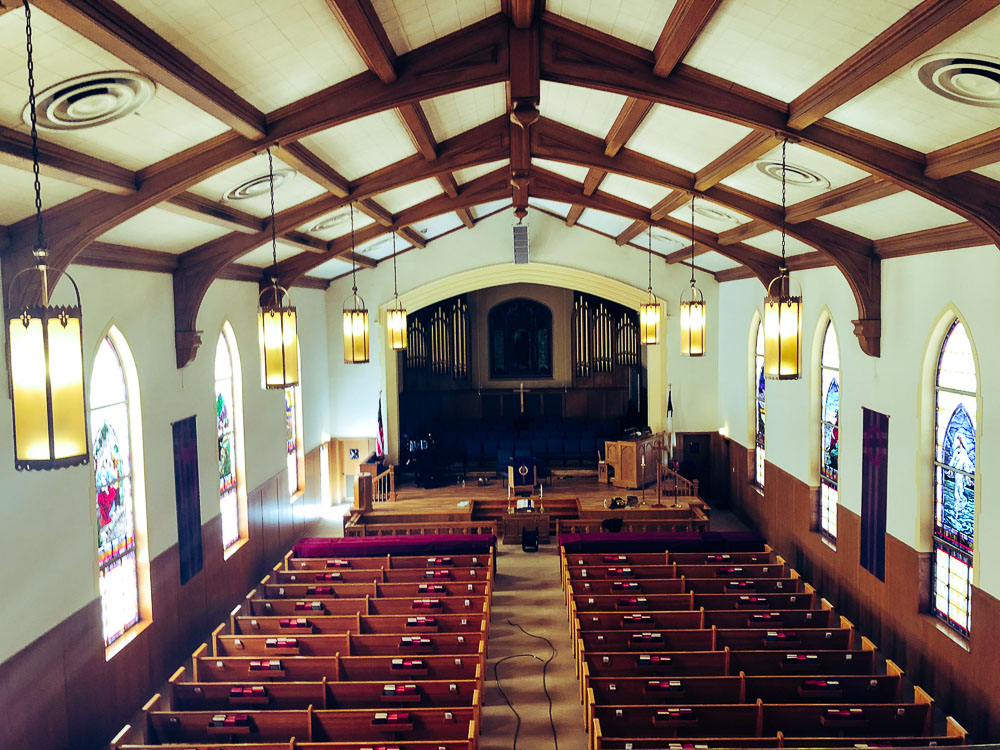
The HDL6-A and the 10s are active systems and this is an old building. Did you have to add to the power capacity?
Yeah we did, but it was actually easier than expected. When you think of a 1950s building you wonder if you’re going to run into issues. But this was actually pretty easy. There was a conduit already run exactly where we needed and it was empty. It was put there knowing in the future, something could be added. So we added four 120-volt 20-amp circuits for the line arrays and the monitors along with five receptacles. So it actually came out to be a lot easier than anticipated.
You had to also make some power capacity addition for this. How did you build in power redundancy for the new sound system?
With all systems we typically use something like a Furman Power Conditioner if we have amplifiers or IEMs like that. With this one, we did a couple of cyber power backup battery UPSs and tied them directly into an ATS power distributor. We do that with all our network upgrades as well, so implementing that into the AV is exactly the same. With those backup battery UPSs we actually had remote management cards in them and tied them into the network so we are fully capable of making sure that they are always online. And if something does happen, we’re aware of it probably before they’re even aware of it. Then we’re able to take the correct steps in troubleshooting and ensuring that they have a smooth service—that power isn’t one of the things holding them back.
I think the project was done in two phases. What was involved in each phase?
The first phase was going to be getting the infrastructure in, so recabling all the audio cabling and cleaning up what we could as far as on stage. In the first phase we implemented the infrastructure, which included the six RCF HDL6-A line arrays—in white. That was very important to them with their very traditional aesthetics. And then we also installed two of the HD10 speaker monitors in their choir loft because before they had two passive speakers in there. So the RCFs being powered definitely was a huge benefit when it came to saving the end cost of copper and everything. Phase 2 was replacing their old analog board. The initial thought was we would come in at least a couple of months after, but when the church saw what a difference the speakers made, they wanted to move forward with phase 2. So we replaced their board with the Yamaha TF3 and then we also installed the Tio stage box, which allowed us to install a digital snake on stage so we could control and monitor their in-ear monitors. We replaced some of their wireless mics with some new Sennheiser wireless mics and gave them all new in-ears for their piano player, their drummer and things like that. And then we tied that all in with the Yamaha TF3 and then the Atlas BlueBridge DSP processor.
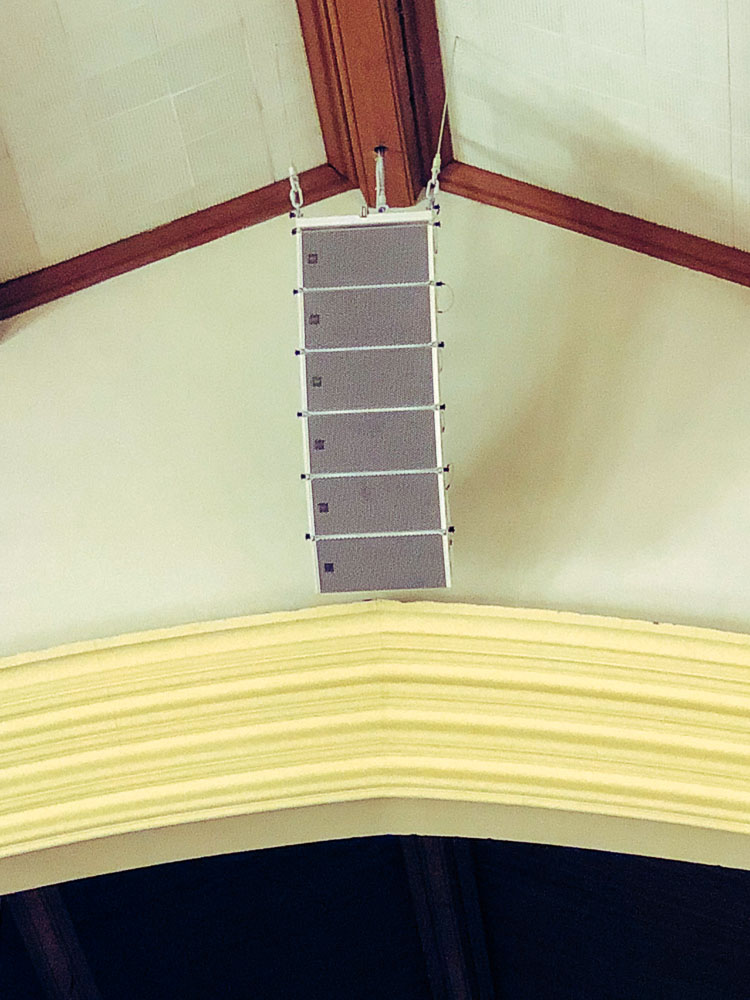
Why did you choose the Atlas BlueBridge Matrix DSP for this job?
It’s our go-to. They have different versions with 8×8 inputs, 8×16, 16×16, so they meet a whole array of solutions. At First United it allowed us to tune the system. It allowed us to tune the choir monitors and the line array speaker easily and effectively, and then it allowed us to add delays for the HDL6s. That allows for future growth without being stunted at the very beginning, so we won’t have to go back in and add something. Let’s say if they want to add low-voltage speakers out in the foyer, we would be able to tie that all into that with BlueBridge DSP and be able to control it via the network.
Where did you locate the equipment racks?
The way their sanctuary is, they actually have a balcony. That’s where they have their sound booth table. There’s a locked closet up to the left. We installed an 18 U rack up there to house the DSP as well as all of the wireless equipment and a few pieces of additional equipment for power redundancy and things like that.
And you included a Yamaha TF3 with a Dante interface card and the Tio1608-D stage box. Was it mainly the operating features on the mixer or just the price that led you to the Yamaha?
Price was definitely a contributing factor, although when you look at the same style of console from different manufacturers they’re all competitive. With this one it was the graphic user interface. It was very user-friendly. The church was coming from an analog board and moving into a digital board, so we wanted to limit the learning curve. And then Yamaha offers the Tio1608-D stage box and their Dante card. That allowed for us to implement a complete solution very easily and very seamlessly. The Dante card connects to the stage box, which provided them a digital snake via one CAT-6 cable run. So that immediately decreased the cost of copper that we would have had to use to install everything upstage.
The church also needed wireless mics and you put in an IEM system. This is a fairly traditional outfit so how do they use the wireless mics?
When we got in there they were already utilizing a few wireless mics. They had an array of Shures or older Sennheisers that they were using. So we completely updated the old wireless mic system and that allowed us to even install a couple of active antennas and provide them with correct RF frequencies. So we were able to calibrate their entire wireless system to work the way it should and sound the way it should. We also added six of the Sennheiser in-ear monitors and then we put those into an 8-in-1 combiner. That meant everyone on stage could just use their smart phone to control their own monitors, which is very convenient and they definitely loved that. It was kind of a blessing because when you think of a traditional church they like to stay on the same path and they like to stick to their roots. But they were very open to this change when it came to the in-ear monitors and how to use them.
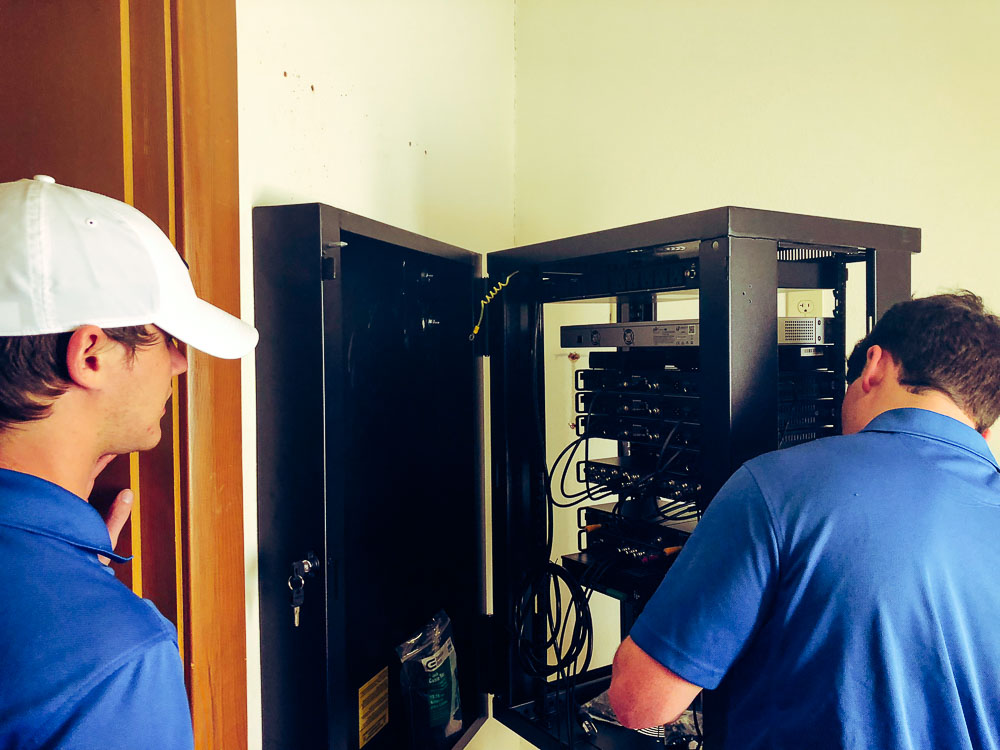
What about training?
With any project that we do, and this one in particular, we always provide training. At Featherston Media we design our systems to be a turnkey, but with a twist. So I guess if you were to use a metaphor, we give you the key to the car but we’re there in the passenger seat with you. When it comes to any project we do training before we go live. So for example they go live on a Sunday. Let’s say we finished that project on Wednesday. Thursday night we would have training with a tech team for a couple of hours where we would sit down with them, show them all the new equipment, and answer any questions they may have initially while being there in person. And then on Friday we do a rehearsal or run-through— we would have the band there as well as the pastor—so they can practice with the new equipment. When we do the rehearsal we’re able to make sure that that tuning is the way it’s supposed to be, that it’s all EQ’d properly. Then we do a full run-through of what their Sunday will be just so they can get a feeling of the changes. And then on Sundays we actually have a support handler in our office, monitoring all of our churches’ live streams, handling any tickets. Because with churches they don’t get to use that equipment but once or twice a week, so they don’t know about any problems until they happen during a service. We’re able to have someone here in the office to quickly handle any issues or problems that may arise
What about future-proofing? What did you build into this to have some room to grow?
With the HDL6s, for example, one bar can hold upwards of 16 actual speakers. So in designing the system we knew that the HDL-6s were versatile enough to be capable of growth. If they wanted to do more live music, we could change the way the whole array was and just add in additional arrays, like maybe a left and a right instead of just a center hang. Also we could add in fills for the balcony and things like that. Then if you want to get into live music with adding instruments, with the Yamaha stage box it actually gave us an additional 32 inputs and outputs onstage. So it allows for growth there as well, without us having to come back in and penny pinch for additional equipment. When we design our systems we want to prevent that.
So what does Featherston Media have coming up next?
We’ve got a few projects. Currently we’re doing a security and access control overhaul for a church here in Waxahachie called the Avenue Church. They’re currently adding a new education wing for their children so we’re doing all the access control and security cameras for that as well as all the cabling that they need for those classrooms. We’re working with a bunch of new IT and networking clients throughout the area and then we are installing some projectors and speakers at some schools here in Waxahachie. If any of the readers wanted to check any of our projects out they can visit our web site at FeatherstonMedia.com where we have articles on all of our most recent completed projects such as the Avenue Church where we did an LED video wall upgrade. They can also find us on Instagram and Twitter and Facebook where we post regularly so they can see on a day-to-day basis what’s going on with some of our projects.


